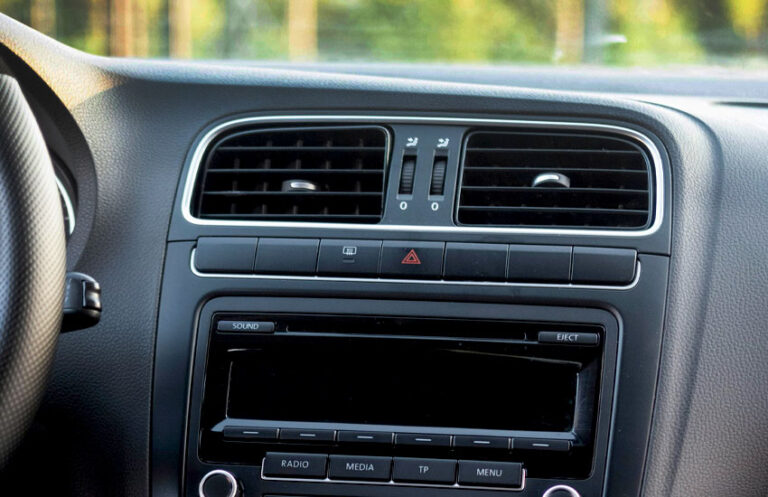As an Amazon Associate, I earn from qualifying purchases at no extra cost to you.
Why is My VSC Light and Check Engine Light On? Find Out Now!
You might be driving one day, and suddenly both the VSC light and check engine light come on at the same time. It can be scary and confusing. You want to know what is wrong with your car and if it is safe to drive.
The good news is, these lights usually mean your car's computer found a problem. In this article, you will learn why these lights turn on together, what causes them, and what you should do to fix the issue.
Understanding What the VSC Light Means
The VSC light stands for Vehicle Stability Control. This system helps keep your car steady on the road, especially when you are turning or driving on slippery surfaces. When the VSC light comes on, it means the system has detected a problem.
Maybe a sensor is not working, or a part of the system is failing. It could also mean your tires are low on pressure or something else is affecting your car's ability to stay balanced.
The VSC system works with the anti-lock brakes and traction control to stop your car from skidding or sliding. When the light is on, your car may still drive, but you might notice it doesn't handle as well in sharp turns or wet conditions.
Sometimes, the light will flash when the system is working hard, like on slippery roads. But if the light stays on, it means there is a problem that needs checking.
Common reasons for the VSC light coming on include faulty wheel speed sensors, a damaged steering angle sensor, or problems with the brake system.
Sometimes, a weak battery or bad alternator can cause the light to come on because the car's computer is not getting enough power. Even a loose gas cap can trigger the VSC light in some cars, though it is more common for the check engine light.
If you see the VSC light, the best thing to do is check your tires first. Make sure they have enough air and look for any damage. Next, check if the light goes off after restarting the car. If it stays on, you will likely need a mechanic to read the car's computer for trouble codes. These codes tell exactly what part is not working.
- The VSC light means your car's stability system found a problem.
- It helps keep your car from sliding or skidding.
- Causes include bad sensors, brake issues, or low tire pressure.
- Sometimes a weak battery or loose gas cap can trigger the light.
- The car can still drive, but handling may be affected.
- Restart the car and check tires first.
- A mechanic can read the car's computer to find the exact problem.
What Does the Check Engine Light Indicate?
The check engine light is one of the most common warning lights in a car. It tells you the engine's computer found something wrong. This could be anything from a loose gas cap to a serious engine problem. When this light turns on, it does not always mean you have to stop immediately, but you should not ignore it.
The check engine light comes on for many reasons. Sometimes it is simple, like the gas cap is not tight enough, causing fuel vapors to leak. Other times, it can be a sign of a bad oxygen sensor, a problem with the catalytic converter, or issues with the spark plugs or ignition coils. These parts help the engine run cleanly and efficiently.
If you drive with the check engine light on for a long time, your car could use more fuel and produce more pollution. In some cases, it can cause the engine to run badly or even damage important parts. Many modern cars have onboard diagnostics, so a mechanic can connect a scanner to see what caused the light to come on.
When the check engine light flashes, it usually means a serious problem like engine misfire. You should stop driving and get it checked right away. If the light stays solid, you can still drive but should get it inspected soon.
- The check engine light means the engine computer found a problem.
- Problems can range from loose gas caps to bad sensors or ignition issues.
- Driving long with this light on can cause poor fuel economy and pollution.
- Flashing light means serious engine trouble, stop driving.
- Solid light means check soon but safe to drive carefully.
- Mechanics use scanners to read trouble codes from the engine computer.
Why Both Lights Turn On Together
Seeing both the VSC light and check engine light at the same time can be worrying. This usually means that the problem is affecting more than one system in your car. Since the VSC and check engine systems share some sensors and parts, one problem can trigger both lights.
For example, if the engine is misfiring or the ignition system has trouble, it can affect the car's stability and cause both lights to come on. Problems with the throttle body, mass airflow sensor, or even the brake system can cause multiple warnings. Sometimes, a bad battery or alternator causing low voltage can cause many lights to turn on.
When both lights come on, your car's computer is warning you that it is not running properly and your safety systems may not work correctly. It is important to have the car checked as soon as possible to avoid bigger problems or unsafe driving conditions.
You can try turning the car off and on to see if the lights reset. If they come back, don't ignore them. Using a code reader or visiting a mechanic to scan your car's computer can quickly tell you what is wrong. Fixing the issue early can save you money and keep your car safe.
- Both lights on means multiple systems detect problems.
- Shared sensors or related parts can cause both warnings.
- Engine misfire, bad sensors, or brake issues can trigger both.
- Low battery or alternator problems can cause lights to come on.
- Car safety systems may not work properly with these lights on.
- Restarting the car might reset lights temporarily.
- A mechanic's scan can find the exact cause.
- Early fixes prevent bigger damage and keep driving safe.
How to Check and Fix the Problem Yourself
If both the VSC light and check engine light come on, you can do some checks at home before going to the mechanic. First, check the basics like tire pressure and gas cap.
Make sure your tires are inflated to the right level and look for any damage or wear. Then, check if your gas cap is tight because a loose gas cap is an easy fix that can turn off both lights.
Next, listen for any strange noises or changes in how your car drives. If the engine is rough or the car pulls to one side, these clues can help find the problem. If you have a code reader or OBD2 scanner, you can plug it into your car's port under the dashboard. This scanner reads trouble codes stored in the car's computer and shows you what is wrong.
Many scanners connect to your phone or show codes on a small screen. Once you get the code, you can search online for what it means. Some common codes like P0420 or P0300 relate to the catalytic converter or engine misfires.
If you find a simple issue, like a loose gas cap or dirty sensor, you can try fixing it yourself. Cleaning the mass airflow sensor or replacing an old spark plug is possible if you are comfortable with car repairs. Otherwise, it's better to get a professional mechanic to do the job.
- Check tire pressure and gas cap first.
- Look for strange noises or driving problems.
- Use an OBD2 scanner to read trouble codes.
- Search codes online to understand problems.
- Simple fixes like tightening gas cap or cleaning sensors help.
- More complex repairs should be done by a mechanic.
When to Seek Professional Help and What to Expect
If both the VSC light and check engine light stay on after your checks or if the car behaves strangely, it's time to visit a professional mechanic. They have special tools and knowledge to diagnose and fix your car's problems safely.
At the shop, the mechanic will connect a scanner to read the error codes from your car's computer. These codes help find exactly what part is broken or not working right. Sometimes, the mechanic will do extra tests like checking the battery, brakes, or sensors to be sure.
Depending on the problem, repairs can be quick or take time. It might be as simple as replacing a sensor or spark plug. Or, it could need more work like fixing the brake system or engine parts. Ask the mechanic to explain the problem and the cost before they start.
If you ignore these lights for too long, the damage can get worse and cost much more to fix. Also, driving with problems can be unsafe for you and others. Professional help ensures the car is safe and runs well again.
- Visit a mechanic if lights stay on or car drives poorly.
- Mechanics use scanners and tests to find the problem.
- Repairs may be simple or complex depending on the issue.
- Always ask for explanation and cost before repair.
- Ignoring lights can cause bigger damage and safety risks.
- Professional repair keeps your car safe and reliable.
How to Prevent These Lights from Coming On Again
After fixing the problem, you want to avoid seeing the VSC and check engine lights again. The best way to prevent this is by regular car care. Check your tires monthly for air pressure and damage. Keep your gas cap tight after filling up.
Get your car serviced regularly. This includes oil changes, air filter replacement, and spark plug checks. Clean parts like the mass airflow sensor or throttle body when needed. Avoid driving too hard on rough roads or in bad weather when possible.
Keep an eye on how your car drives. If you notice any strange noises, vibrations, or smells, get it checked early. A healthy battery and alternator also help prevent warning lights, so test these during service.
By staying on top of maintenance and fixing small problems quickly, you keep your car's computer happy and prevent warning lights from turning on. This saves you money and keeps driving safe and smooth.
- Regular tire and gas cap checks.
- Follow car service schedules for oil, filters, and plugs.
- Clean sensors and throttle body when needed.
- Drive carefully to avoid damage.
- Watch for strange signs and fix early.
- Keep battery and alternator healthy.
- Early care stops warning lights from coming back.
Final Thoughts
Seeing the VSC light and check engine light together can be worrying, but it is a way your car tells you something needs attention. Understanding what these lights mean helps you stay calm and know what to do. You can do some simple checks yourself, like tires and gas cap, and use a code reader to learn more. But if the problem stays, visiting a mechanic is the safest choice. Regular care and early fixes keep your car running smoothly and prevent these lights from coming on again. Remember, your car is talking to you—listen closely to keep it healthy and safe.
Frequently Asked Questions (FAQs)
Is it safe to drive when the VSC and check engine lights are on?
Driving with these lights on depends on the situation. If the check engine light is solid and the car feels normal, you can drive carefully to a mechanic. But if the check engine light flashes or the VSC light stays on, it means the stability system or engine has serious issues. In this case, it is safer to stop driving and get help right away. Ignoring these warnings can lead to bigger damage or unsafe driving conditions.
Can a loose gas cap cause both the VSC and check engine lights to come on?
Yes, a loose or damaged gas cap can cause the check engine light to turn on because it lets fuel vapors escape. Sometimes this also affects the VSC system, causing its light to come on. Tightening or replacing the gas cap often fixes this problem quickly. After fixing it, the lights may stay on for a while but usually go off after driving a bit.
Do I need special tools to read the trouble codes from my car?
You don't need very expensive tools. A simple OBD2 scanner, which is affordable and easy to use, can read trouble codes from your car. Some models connect to your smartphone via Bluetooth and show codes with simple explanations. This helps you understand what caused the warning lights. If you don't want to buy a scanner, many auto shops offer free code reading.
Is it common for low battery voltage to cause warning lights?
Yes, low battery voltage or a weak alternator can cause multiple warning lights, including the VSC and check engine lights. The car's computer needs steady power to work properly. If the battery is old or charging is poor, sensors may send wrong signals and trigger the lights. Testing the battery and charging system is important when these lights come on unexpectedly.
Can bad spark plugs cause both lights to turn on?
Bad spark plugs can cause engine misfires, which trigger the check engine light. Because engine misfires affect how your car runs and handles, the VSC light may also come on. Replacing spark plugs is a common fix and can improve engine performance and stop the warning lights from coming on.
Do I need to reset the lights after fixing the problem?
Sometimes, yes. After fixing the issue, the lights might stay on until the car's computer clears the error codes. You can reset the lights using an OBD2 scanner or by disconnecting the car battery for a short time. But if the problem is not fixed fully, the lights will come back on. It's best to make sure the repair is done right before resetting.
Is it normal for the VSC light to flash sometimes?
Yes, the VSC light may flash briefly when the system is actively working to keep the car stable, like on slippery roads or during sharp turns. This is normal and means the system is doing its job. But if the VSC light stays on all the time, it means there is a problem that needs checking.
Can ignoring these lights cause expensive repairs?
Yes, ignoring the VSC and check engine lights can lead to worse problems. Small issues can turn into bigger, costly repairs if not fixed early. Also, driving with these lights on may harm your engine, brakes, or stability system. It is always better to address warning lights quickly to save money and stay safe.






